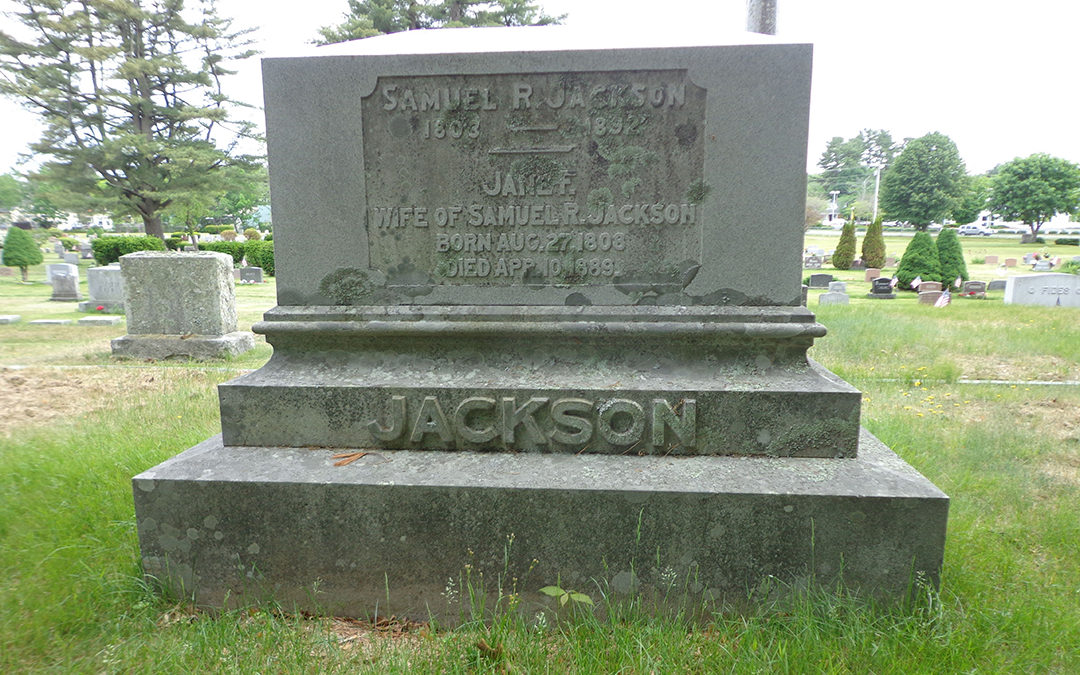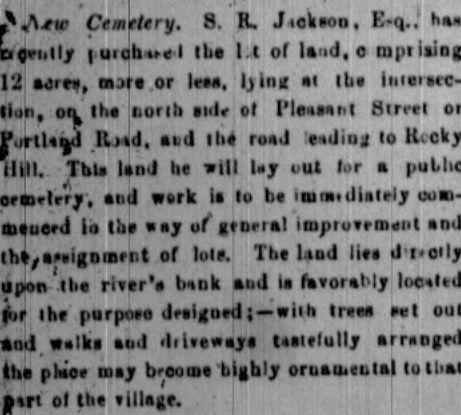When Samuel R. Jackson, farm-boy-turned-merchant, headed to the Gold Coast in 1850, he faced a long and arduous journey by foot, wagon train, or ship. He may well have joined several other adventurers from the Topsham area who sailed down the Atlantic coast to the tip of South America, around Cape Horn, and finally up the Pacific coast to San Francisco.
Though miners sought to make their fortunes panning and digging for gold, those who really profited from the Gold Rush were the businesses that served them, such as Samuel’s coal company. When he arrived in California he no doubt established local customers for his product. Next he left San Francisco for the Oregon Territory to sell to the mining and lumber businesses there.
In November or December 1851, he sailed aboard the schooner Harriet for the mouth of Oregon’s Columbia River. The ship never arrived. Instead, another boat reported seeing the Harriett in the Atlantic Ocean in distress, her decks swamped by waves, with one mast toppled. Assuming the ship had been lost at sea and all aboard were drowned, The True Wesleyan weekly newspaper published Samuel’s obituary. The heartfelt tribute written by Samuel’s minister, the Rev. W. H. Brewster, said in part:
But oh, his family how many hearts bleed for them! What a change! Could they have seen him, followed him to the grave, erected a stone at his head—but no, he sleeps in the “deep, deep, sea.”
It would seem that Samuel, the man who had survived two devastating fires and who possessed stamina and ability enough to engage in one successful business after another, was no match for the sea. He would have been only 49-years-old when he died.
That is, if he had died.
In reality, survivors of the shipwreck managed to reach Oregon’s shore. Lost, short on food, and fearful of the Native people, the passengers nevertheless persevered. With nothing left to lose, they trusted one of the Native people to guide them through the wilderness. At last, they reached the Columbia River and, from there, took a steamer back to San Francisco.
When Samuel returned to his family in Topsham, he moved them across the Androscoggin River to a grand home in Brunswick, where he and his family lived for the next twenty-five years. While there Samuel engaged in several businesses and was president of the First National Bank. He also gave back to the community, serving as Brunswick’s state legislator.
Perhaps mindful of his family’s distress when they thought he was buried at sea, in 1873 Samuel bought twelve acres at the corner of Pleasant Street and River Road. There he built a public cemetery overlooking the Androscoggin River.
Perhaps content to have secured their final resting places, Samuel and Jane began yet another new adventure. They spent the next several years in Plainfield, New Jersey, to be near their daughter Susan and her children.
Finally, when they were well into old age, the couple returned to Brunswick. And it was there that Jane, and then Samuel, died. They were buried side by side in Riverside, the cemetery founded by the farm boy who grew into a successful entrepreneur and a man of character, Samuel Randall Jackson.



